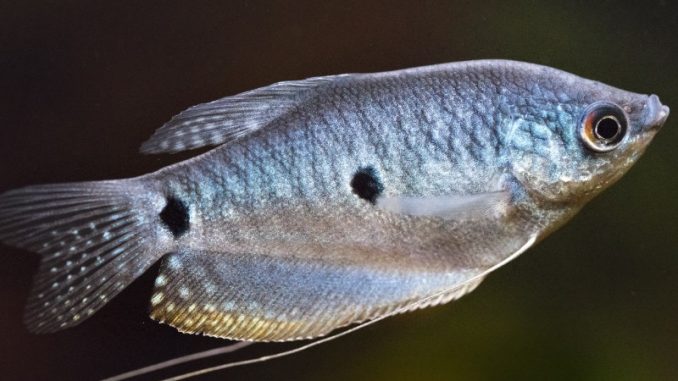
The three spot gourami is one of the numerous species of freshwater fish known as gouramis. These fish are part of the Osphronemidae family and are native to South East Asia.
The three spot gourami is named for its distinctive two-spot markings that make each of its eyes look like a third spot. This fish is also sometimes called the opaline gourami, blue gourami, and gold gourami, depending on the physical characteristics it exhibits.
Aquarists enjoy keeping three spot gouramis because they are attractive, easy to care for, peaceful, and readily available.
TABLE OF CONTENTS
Three Spot Gourami Facts & Overview
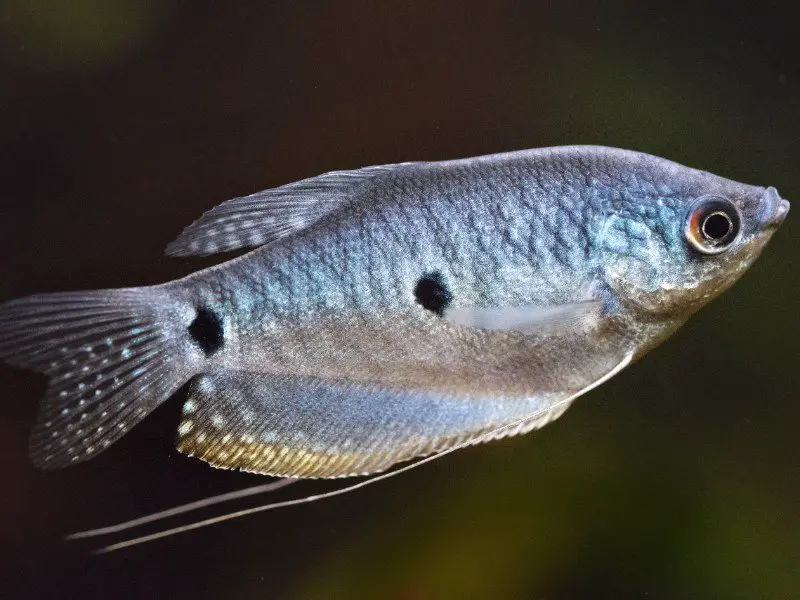
| Category | Rating |
| Care Level | Easy |
| Temperament | Mostly placid, but the male can be aggressive |
| Color | Blue, gold, silver, and mottled |
| Lifespan | ~5 years |
| Size | ~5 inches |
| Diet | Omnivore |
| Family | Osphronemidae |
| Scientific Name | Trichopodus trichopterus |
| Minimum Tank Size | 30-gallons |
| Tank Setup | Freshwater, plants, caves |
| Compatibility | Other similar-sized gouramis, and other peaceful freshwater fish |
Distribution
The three spot gourami (Trichopodus trichopterus) inhabits the Mekong Basin. The fish is native to freshwater rivers, swamps, and marshes in Southeast Asia.
Three spot gouramis were once found exclusively in parts of China, Malaysia, Singapore, Vietnam, and Thailand. Now, these fish are found in the Philippines, India, and parts of Trinidad.
During the dry season, three spot gouramis remain in rivers, marshes, and swamps. However, during heavy rain and flooding, they move into flooded forests. The fish make their way back to their original habitat once the floods subside.
Adult Size & Lifespan
Three spot gouramis grow up to six inches long in the wild, where they have unlimited space. Captive-bred three spot gouramis will grow up to five inches long.
To help your gouramis grow to their full potential, keep them in a large tank that is kept clean, and feed them high-quality food.
Most three spot gouramis live four to six years. Aggressive tankmates or stressful encounters can shorten the fish’s lifespan.
Availability
The three spot gourami is readily available in pet stores and online. Three spot gouramis are inexpensive and typically cost between $10–15.
Appearance & Behavior
The three spot gourami has a striking appearance. The species has an interesting blue and silver coloration, and is occasionally found in gold.
Three spot gouramis have two spots along the side of their bodies. One spot is located in the center of the body, and one is close to the tail. These spots are in line with the eye, making the eye look like a third spot.
The male three spot gourami has a long, pointed dorsal fin. The female’s dorsal fin is more rounded. The female will appear round and swollen. This shows the fish’s readiness to breed and happens when the female fish fills up with eggs.
Gouramis are small fish that grow up to five inches long in captivity. When gouramis have more room to swim and explore, they grow up to six inches long.
Sub-species of gouramis are about the same size as the three spot gourami. Dwarf varieties are an exception as they have a maximum length of two inches and are smaller than three-spot gouramis.
Typical Behavior
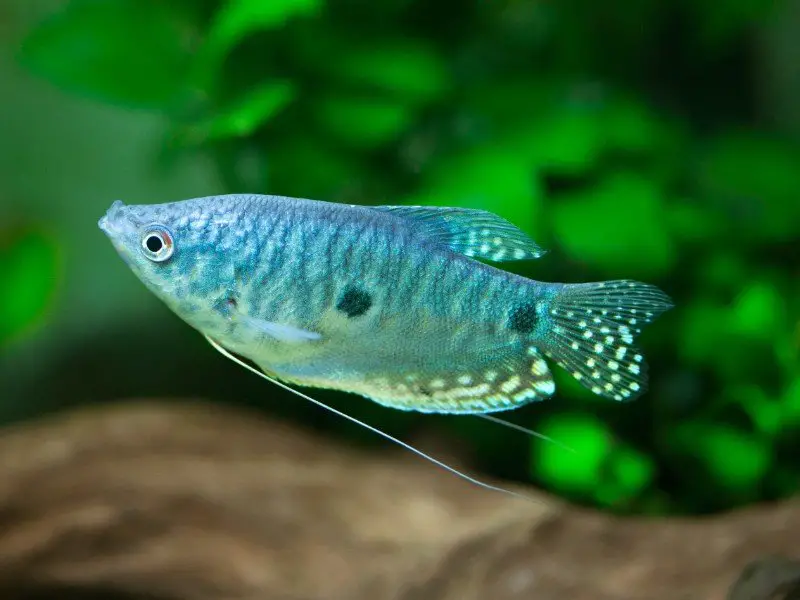
Three spot gouramis are peaceful fish with placid temperaments. However, males have aggressive tendencies and will nip and bite one another.
Aggressive male three spot gouramis become cautious and withdrawn around large, aggressive fish. Gouramis will hide when they feel threatened.
Male gouramis are incompatible with other male gouramis. Keep three female three spot gouramis with one male gourami to control aggression. Male gouramis will harass females, which can cause stress, so ensure there are plenty of females in the tank.
Three spot gouramis are active swimmers and stay close to the top of the tank. They have a labyrinth organ that allows them to breathe in oxygen from above the water’s surface.
Look for signs of stress in three spot gouramis, as stress makes these fish prone to disease. Distressed fish behave in the following ways:
- Loss of appetite
- Breathlessness
- Clamped fins
- Unusual swimming patterns
Three Spot Gourami Care
The three spot gourami is a hardy fish that is easy to care for.
Three spot gouramis are found in slow-moving water with thick vegetation so you should decorate their tank with natural plants that are common in their natural habitat. Plants such as duckweed are great additions to the tank.
Provide three spot gouramis with a balanced diet of meat and plant-based food. These fish are omnivorous and feed on insect larvae and algae in the wild.
Three spot gouramis are prone to common aquarium diseases and health issues such as Ich and constipation. Most diseases are easy to treat with medication or frequent water changes.
Disease
You should look out for the following signs, as they may be indications of disease taking hold:
- White spots appear on the body and fins.
- Sudden change in color.
- Sudden change in swimming pattern or behavior.
- Refusing to eat.
- Peeling scales.
The most common disease to affect three spot gouramis is ich. This condition is a viral infection that causes white spots to develop on the fish’s body and tail. Treat this condition with antibiotic drops. Add the drops directly to the water.
You should also treat the water in the community tank, in order to prevent the other fish from getting sick. You should only return the affected fish to the community tank a few days after all the spots have cleared up.
Three spot gouramis can become constipated from eating a poorly balanced diet. You should feed high-quality food that has enough fiber. A lack of fiber in the diet prevents the digestive system from getting rid of waste. The main symptom of constipation is a swollen belly. Treat the affected fish by feeding flakes or pellets that are high in fiber.
Habitat and Tank Requirements
Three spot gouramis occupy water full of vegetation and wildlife, such as slow-moving rivers, swamps, and marshes. You should replicate these conditions in your tank.
Three spot gouramis like to hide in caves and crevices. You should place plants, rocks, and driftwood logs in the tank to provide hiding places.
Three spot gouramis are accustomed to dark, murky water, so mimicking this lighting is vital. The light in the tank should be dim. Keep the aquarium out of direct sunlight.
You should clean your three spot gourami tank regularly, as this prevents algae buildup in the water. Hygienic tank conditions keep gouramis healthy and free of infections. You can keep the water clean by siphoning the bottom of the tank and performing regular water changes to remove waste and leftover food.
Tank Conditions
You should maintain the following water parameters in a three spot gourami tank:
- pH level between 6.5–7.5
- Carbonate water hardness between 50–140ppm
- Water temperature 73–82°F
- Minimum 30-gallon aquarium
Aerate the water by adding a water filter that creates gentle bubbles. Ensure the water current in the tank is soft by installing a gentle water pump.
Decorate the tank with plants, rocks, and logs to give the fish places to hide. Ensure tank accessories are smooth and blunt so they don’t hurt the fish.
Tank Mates
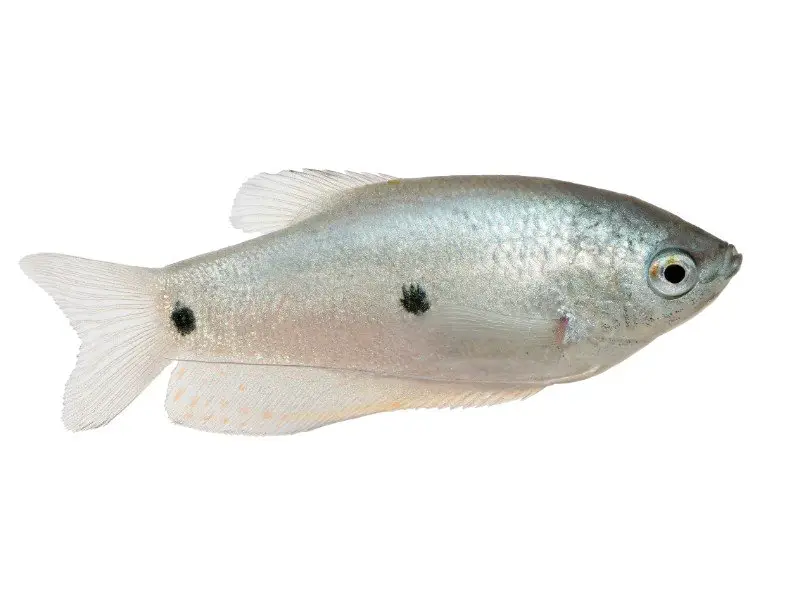
The three spot gourami will do well in a community tank. The species is compatible with similar-sized, peaceful freshwater fish.
Here are some common three spot gourami tank mates:
- Tetras – small freshwater fish from the Characidae family, compatible with most other freshwater species.
- Mollies – placid fish that are com[patible with many other species.
- Danios – small freshwater fish from the Cyprinidae family, recognizable by their distinctive stripes.
- Loaches – from the family Cobitidae, containing 260 species.
You should avoid placing non-fish tank mates in a three spot gourami tank. Gouramis will try to eat snails, shrimp, and other non-fish tankmates.
Diet and Feeding
The three spot gourami is an omnivorous fish. The species lives off a balanced diet of plants and meat in the wild.
Offer three spot gouramis a high-quality diet of fresh or frozen brine shrimps and blood worms. Supplement the fish’s diet with flakes and pellets.
Feed three spot gouramis twice a day and take care not to overfeed. Too much food can cause bloating and constipation, which can eventually kill the fish. Three spot gouramis should finish their meal within 5 minutes to prevent overeating.
Breeding
Three spot gouramis are easy to breed. Look at their dorsal fin to identify their sex. Males have long and pointed dorsal fins, and females have round dorsal fins.
You should feed three spot gouramis protein-rich food one week before breeding. Increasing the protein in their diet will encourage breeding.
Place females into a separate breeding tank once they begin to look round. Decorate the breeding tank with plants and a low filtration system.
Once the females have settled, introduce the male into the breeding tank. Wait for the male to build bubble nests around the foliage. The male will then rub itself against the females.
Remove the females from the breeding tank once the fish finish mating. Females will attempt to eat the eggs before they hatch. The male will guard the eggs until they hatch, which will take up to 24 hours.
The young fry will do well on a diet of baby brine shrimp until they have grown big enough to eat small flakes and pellets.
Should You Get a Three Spot Gourami for Your Aquarium?
A three spot gourami is a beautiful-looking fish with unusual markings. This species of gourami is easy to care for and fun to watch.
You should only keep one male three spot gourami in the tank. A single male can be housed with a few females, which is great for breeding purposes.
Responsible aquarists will enjoy caring for three spot gouramis as they are entertaining and easy to breed. Make sure their tank conditions are suitable for the species to ensure the fish stay healthy.

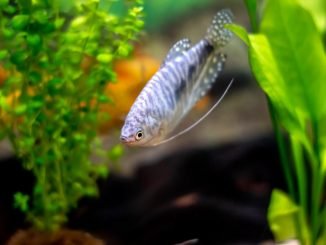
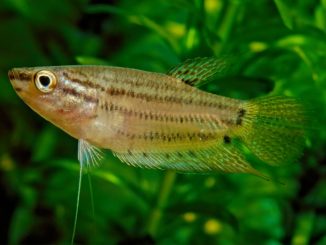
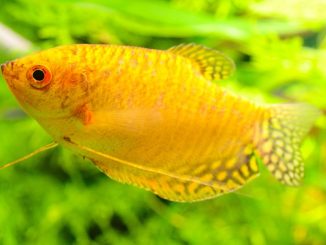
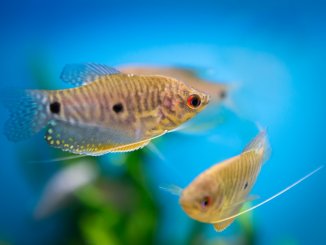
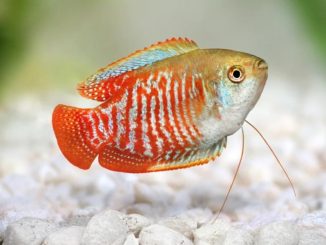
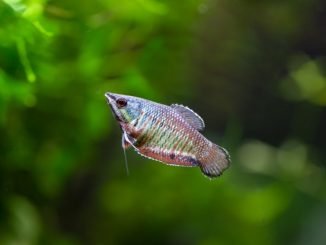

Be the first to comment